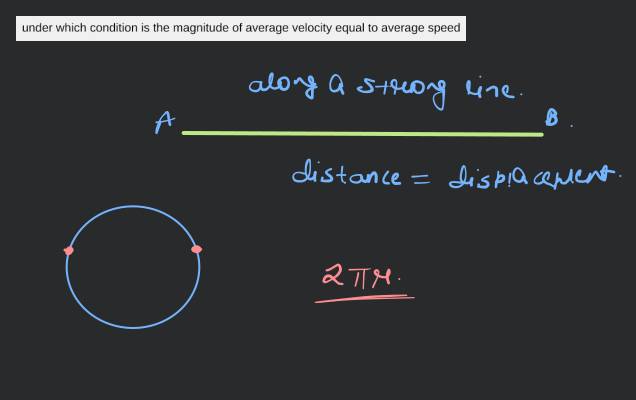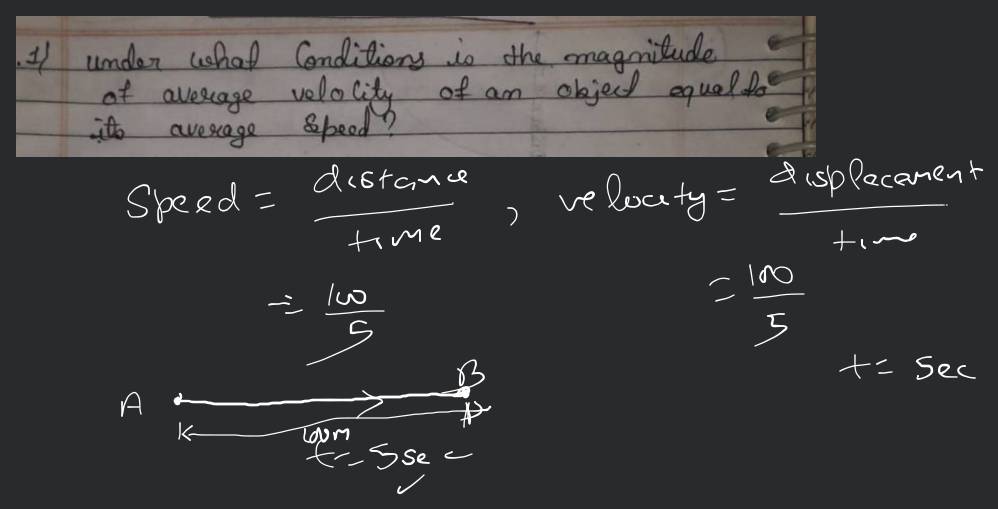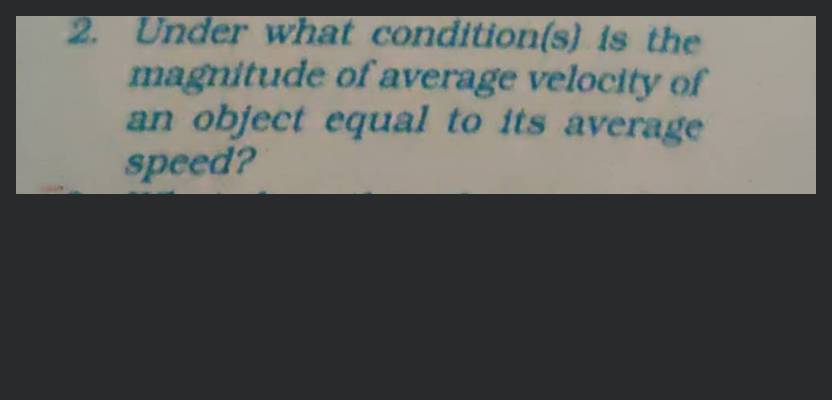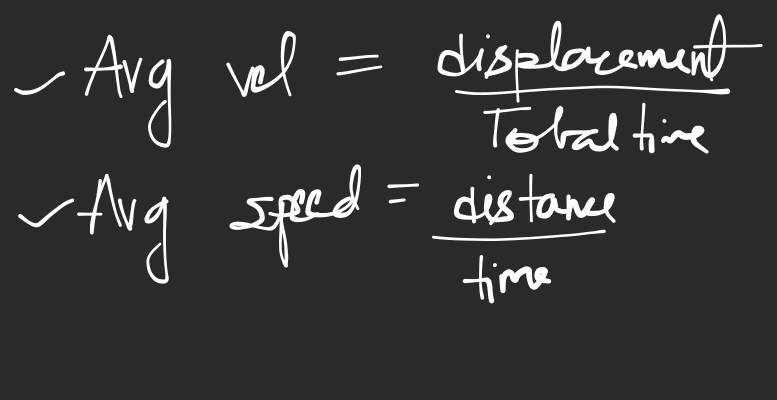Question
Question 12: Under which condition is the magnitude of average velocity equal to average speed?
Found 6 tutors discussing this question
Discuss this question LIVE
15 mins ago
 Text solution
Text solution Verified
Verified
Answer:
The magnitude of average velocity is equal to average speed when an object covers equal distances in equal intervals of time in a particular direction.
Was this solution helpful?
14
Share
Report
Filo tutor solutions (4)
Learn from their 1-to-1 discussion with Filo tutors.
3 mins
Uploaded on: 7/30/2023
Was this solution helpful?
69
Share
Report
2 mins
Uploaded on: 7/24/2023
Was this solution helpful?
103
Share
Report

One destination to cover all your homework and assignment needs
Learn Practice Revision Succeed

Instant 1:1 help, 24x7
60, 000+ Expert tutors

Textbook solutions
Big idea maths, McGraw-Hill Education etc

Essay review
Get expert feedback on your essay

Schedule classes
High dosage tutoring from Dedicated 3 experts
Practice more questions from Physics (Lakhmir Singh)
Q1
Question 11:
When is a body said to have uniform velocity?
Q2
Question 12:
Under which condition is the magnitude of average velocity equal to average speed?
Q3
Question 13:
Which of the two can be zero under certain conditions : average speed of a moving body or average velocity of a moving body?
View allPractice questions from Physics (Lakhmir Singh)
Question 2
Views: 5,556
Question 3
Views: 5,774
(a) uniform motion
(b) uniform acceleration
(c) no acceleration
(d) uniform velocity
Question 4
Views: 5,760
Practice more questions from Motion
Question 2
Hard
Views: 6,231
Practice questions on similar concepts asked by Filo students
Question 2
Views: 5,830
Question 3
Views: 5,167
Question 4
Views: 5,742


Stuck on the question or explanation?
Connect with our Science tutors online and get step by step solution of this question.
231 students are taking LIVE classes
| Question Text | Question 12:
Under which condition is the magnitude of average velocity equal to average speed? |
| Updated On | Jul 30, 2023 |
| Topic | Motion |
| Subject | Science |
| Class | Class 9 |
| Answer Type | Text solution:1 Video solution: 4 |
| Upvotes | 388 |
| Avg. Video Duration | 3 min |








